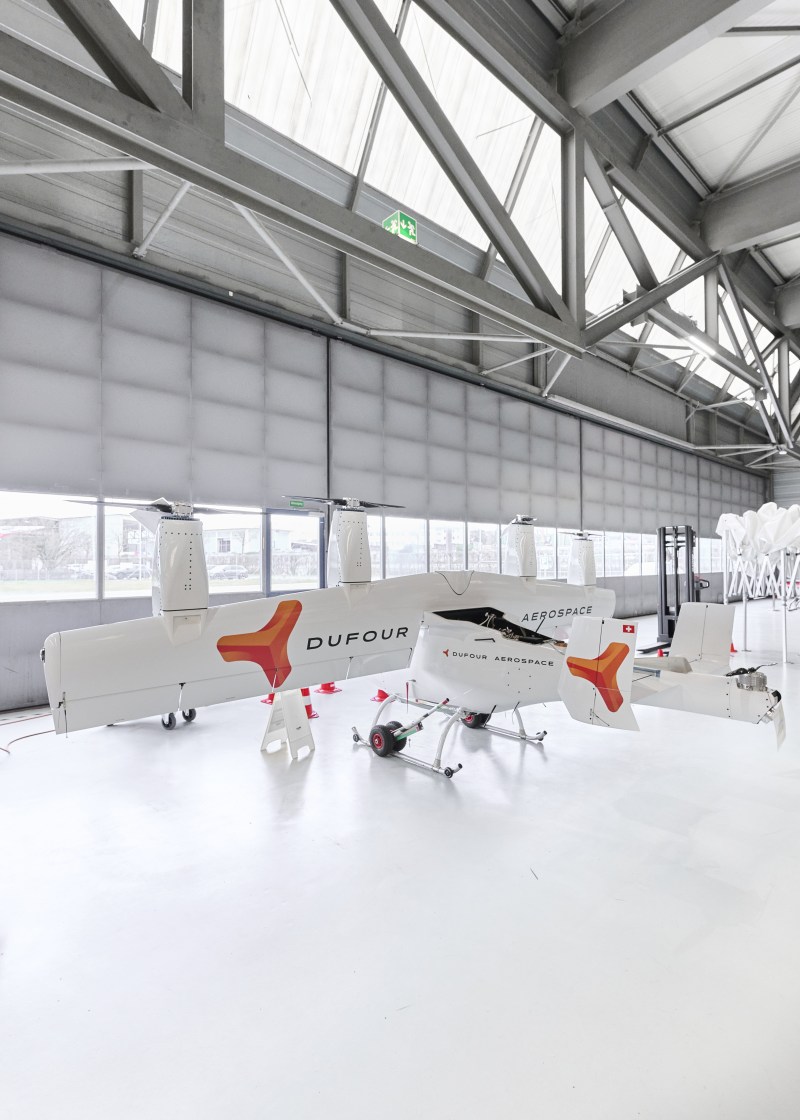Dufour Aerospace Dispatches Unmanned Helpers
Dufour Aerospace schickt unbemannte Helfer
Das Startup entwickelt und produziert in Dübendorf Langstreckendrohnen für medizinische Zwecke.
Im Hangar 9 direkt neben dem Fliegermuseum steht ein gewaltiger weisser Vogel: Der Aero2 misst sechs Meter Spannweite, hat vier Triebwerke, prominente Kippflügel und einen Bauch, der locker 40 Kilogramm Material aufnimmt. Er steht hier gleich in dreifacher Ausführung im hinteren Teil der Halle, während einige Mechaniker die Flieger für die nächsten Tests vorbereiten. «Wir stehen kurz vor der seriellen Fertigung», sagt CEO Sascha Hardegger, der von der Rega zu Dufour Aerospace stiess, bei einem Rundgang.

Mr. Hardegger, you're building large transport drones. Will these soon be flying through Swiss skies?
Switzerland isn’t our primary market — at least not for now. Our drones are designed for long-range flights in regions with limited road networks and infrastructure. If you live on an island in Greece, in Scandinavia, or in Canada, the Aero2 might soon be making your life easier.
What’s the key innovation?
There isn’t one single breakthrough. The Aero2 takes off and lands like a helicopter, thanks to its tilt wings, but flies like a plane, meaning it needs no runway. What’s special is certainly the propulsion and the range: the drone is powered by electric motors, whose batteries are charged mid-flight by a two-stroke engine. This allows for distances of up to 400 kilometers with a 40-kilogram payload and over 1,000 kilometers with 10 kilograms. Part of Dufour Aerospace’s success comes from the fact that we develop almost everything in-house. And that we’ve found a clear niche.
Which niche is that?
The Aero2 handles urgent courier tasks across long distances. With a cruising speed of up to 180 km/h, we can ensure the delivery of medications, blood products, and lab samples to remote areas. Switzerland is very well connected, of course — but consider that around 66 percent of people in Africa live more than two kilometers from a paved road, or that Sweden has roughly 1,000 inhabited islands. That points to a clear market opportunity.
How is the company structured?
We’re a private startup with around 60 employees, located in Dübendorf and in the Canton of Valais (VS). The drone’s structural design is developed by our team at the University of Zurich’s Space Hub. Prototype production, electronics, and software are handled here in Hangar 9. In Visp (VS), we carry out aerodynamic tests.
How important is it for your company to handle R&D in-house?
It’s essential. We even developed the flight computer for our products ourselves and are constantly working on improvements. Collaboration with universities is also very important. We have active projects with the University of Zurich, ETH Zurich, and the Zurich University of Applied Sciences. We are of course also keen to attract the best and most motivated engineers. That’s why our location here at the Switzerland Innovation Park Zurich is ideal for us.






